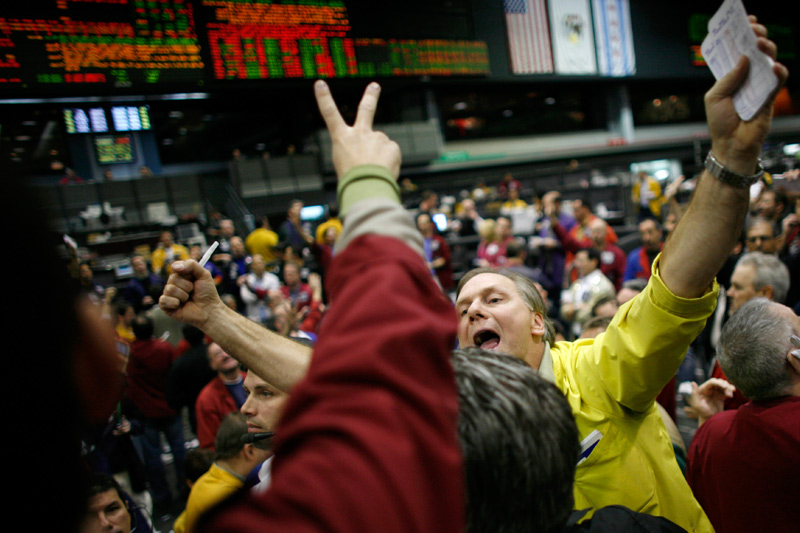By Ryan Vlastelica NEW YORK (Reuters) - Leveraged exchange-traded funds, designed to magnify short-term returns, have fallen out of favor this year as investors who had embraced them are finding costs excessive in a calm market that is not rewarding bets on wild daily swings.
The funds may continue to lack appeal as markets show no indication that fear will enter into the trading equation anytime soon, with equities shrugging off all manner of negative headlines.
Broad-market volume is down this year, with the most widely traded ETF, the SPDR S&P fund, posting a 13.8 percent drop in August from a year ago. Leveraged funds are getting hit even harder, with declines of 25 to 30 percent.
Leveraged ETFs aim to offer daily returns at a multiple to an underlying index. But the funds carry high expense ratios and trading costs, making them less appealing because small daily moves are not enough to justify the expense.
Market volatility has been non-existent of late. The CBOE Volatility Index lately traded at 12.73, after having fallen in July to its lowest level since February 2007, at 10.28.
"In such a low-volatility environment, the institutional firms that use leveraged funds to hedge may not feel they're worth the cost," said Joel Dickson, senior ETF strategist at Vanguard in Valley Forge, Pennsylvania.
The funds are designed to be one-day holdings, and purchasing and selling a fund in the same session results in twice the commissions and fees that a trader has to pay compared with a buy-and-hold investor. Those costs, along with the low volatility, "further eat up whatever profits might result," Dickson said.
The ProShares Ultra S&P 500 fund, which offers double the daily return of the S&P 500, has both a gross expense ratio and a net expense ratio of 0.9 percent, far greater than the SPDR S&P 500 fund, which has a GRE of 0.1 percent and a NER of 0.0945 percent.
Another fund, the Direxion Small Cap Bull 3X Shares, has a gross expense ratio of 1.07 percent and a net expense ratio of 0.95 percent.
"The fees are really high by ETF standards, and they're not as cost effective as they would be if we were getting big market moves," said Michael Rawson, fund analyst at Morningstar in Chicago.
"In proportion to the returns you could potentially get they're not so bad, but if you're speculating on the market you could go out and just buy high-momentum stocks."
In addition to the expense ratios, leveraged funds negotiate a total-return swap with major banks in order to get the necessary exposure to deliver the promised multiple.
The cost of these swaps are not "always disclosed, but they're generally not cheap," said Dave Nadig, chief investment officer at ETF.com in San Francisco, who estimated the costs at 50 basis points to 2.5 percent "depending on what's being swapped. That comes out of your total return."
LOW VOLATILITY, LOW VOLUME
The VIX is well below its long-term average of 20, and overall market moves have been slim of late. Over the past 250 sessions the S&P's average daily move, either up or down, has been 14.29 points, or about 0.7 percent. That's an average that has been rarely hit recently.
Total August trading volume for the ProShares S&P fund fell 34 percent from August 2013, though shares are up 17.4 percent on the year. Volume fell 26 percent at the ProShares UltraShort S&P 500 ETF, which corresponds to twice the inverse daily move of the S&P, and 33 percent for the Direxion small-cap fund, which attempts to offer three times the daily move of the Russell 2000.
"Not only is volatility exceptionally low, but general interest levels have been declining," said Stephen Sachs, head of capital markets at ProShares in Bethesda, Maryland.
Alternative ETF providers like ProShares are not trading outfits, so they have not been directly affected by the drops in trading action. They make money from management fees that are tied to a fund's assets under management and are "within normal ebbs and flows" in the current environment, Sachs said.
Other fund providers, including Direxion and VelocityShares, also said they were not experiencing significant declines in revenue from the current environment, and are not planning any changes to their business - such as launching or closing funds.
(Editing by Leslie Adler)
